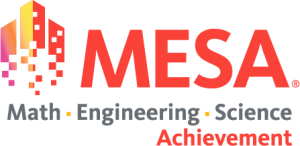On SLO Day (on 4/8/16), we created new SLOs for each course. We wanted to have 3 SLOs per course so that we could assess ONE per year and focus on completing the SLO Assessment Cycle each year, while still satisfying the requirement of completely assessing all SLOs for each course on a 3 year cycle. We also wanted to map each SLO to a PLO (for which we have 3: one focused on graphing, one focused on solving equations algebraically and one is focused on numerical methods). Not every course could have such a mapping, but for those that could, that is how we revised our SLOs.
Math 1 — Precalculus
- Applications: Apply concepts of functions to help solve application problems.
- Algebra: Solve algebraic equations or simplify expressions that contain compositions of functions.
- Graphs: Express graphically the behavior of rational functions near asymptotes and at infinity using the concept of the limit.
Math 2 — Precalculus with Analytic Geometry
- Applications: Apply concepts of analytic geometry to help solve application problems.
- Algebraic: Evaluate functions at numerical values and simplify algebraic expressions with functions evaluated at symbolic values and analyze and simplify compositions of functions.
- Graphs: Establish the behavior of rational functions graphically near asymptotes and at infinity using the concept of the limit
Math 3A — Calculus I
- Applications: Construct and solve mathematical models using the derivative.
- Algebra: Evaluate derivatives of many functions and antiderivatives of simple functions.
- Graphs: Generate solutions to quantitative problems using numerical, graphical, and algebraic methods.
Math 3B — Calculus II
- Applications: Construct antiderivatives of many different types of functions and solve mathematical models using the integral.
- Algebra: Reframe functions as power series and test these series for convergence.
- Graphs: Generate solutions to problems using parametric and polar representations of functions.
Math 3C — Calculus III
- Applications: Construct and interpret models of circulation and force using vector valued functions.
- Algebra: Evaluate derivatives and integrals of multivariable functions including the use of Green’s Theorem, Stokes’s Theorem and Gauss’s Theorem.
- Graphs: Create graphs for multivariable and vector valued functions.
Math 3E —Linear Algebra
- Applications: Diagnose application problems by applying systems of equations to the problems of curve fitting, electrical circuits, economic models, and communication technology.
- Algebra: Modify and solve a system of equations using a variation of Gaussian Elimination and other methods, including the use of matrices.
- Graphs (?): Construct a basis for a vector space, such as the kernel for a given transformation or the image of a given matrix.
Math 3F — Differential Equations
- Applications: Formulate models for various real-world phenomena using first order, second order and systems of differential equations.
- Algebra: Generate solutions to first order, second order and systems of differential equations using a variety of different techniques.
- Develop approximate solutions to first order ordinary differential equations numerically and evaluate the accuracy of these approximations.
Math 11 — Discrete Mathematics
- Design algorithms and compute their efficiency.
- Defend conclusions by proving mathematical statements inductively and defining mathematical concepts recursively.
- Create circuits representing boolean functions and minimize them using Karnaugh maps and the Quine-McCluskey method.
Math 13 — Introduction to Statistics
- Create inferences about populations based on data obtained from samples.
- Decide whether or not a particular analytical methodology is appropriate given a particular statistical or probabilistic context and justify your response.
- Formulate analyses of graphical relationships between variables in a sample or a population.
Math 15 — Mathematics for Liberal Arts
- Applications: Compute, with sophisticated formulas, such quantities as interest payments for amortized loans.
- Algebra: Solve, using algebraic methods, various types of measurement problems, for example: perimeter, surface area and/or volume
- Graphs: Analyze, using a graph of an Euler and/or Hamiltonian Circuit, to decide on the solvability of such types of circuits.
Math 16A — Calculus for Business and Life/Social Sciences
- Applications: Construct and solve mathematical applications related to business using the derivative.
- Algebra: Integrate multiple rules of differentiation to compute derivatives of many functions.
- Graphs: Analyze the graph of a linear function to identify such quantities as marginal cost or marginal profit.
Math 16B — Calculus for Business and Life/Social Sciences
- Applications: Determine solutions to optimization problems, for example find maximum profit from a combination of labor and capital, by applying the method of Lagrange multipliers.
- Algebra: Compute derivatives and anti-derivatives of trigonometric functions, and solve linear differential equations.
- Graphs: Analyze the graphs of multivariable functions for maximum/minimum problems – be able to report the max/min of the function as well as the combination of inputs that correspond to the max/min.
Math 50 — Trigonometry
- Applications: Construct equations involving trigonometric functions to solve applications.
- Algebra: Assemble solutions to trigonometric equations.
- Graphs: Create graphs of trigonometric functions.
Math 201 — Elementary Algebra
- Applications: Formulate a linear model of a real world application and use it to interpolate/extrapolate. Interpret the slope and y-intercept in the context of the application.
- Algebra: Solve a linear equation involving at least two of the following: fractions, decimals, parentheses, and like terms for a variable.
- Graphs: Create a linear graph based on given attributes of a line (e.g., two points, slope and point, slope and y-intercept, etc). Identify key characteristics of a given linear graph (e.g. slope, y-intercept, x-intercept, etc). (NOTE: include scaling, table, define variables, etc).
Math 202 — Geometry
- Apply the properties of parallel lines to solve problems.
- Identify and solve special and similar triangles.
- Apply the properties of circles and special polygons.
Math 203 — Intermediate Algebra
- Applications: Formulate a nonlinear model (either quadratic or exponential) of a real world application. Interpret the key characteristics of the graph (vertex, intercepts, maximum value, minimum value, asymptotes, growth rate, decay rate, etc.) in the context of the application.
- Algebra: Solve a nonlinear equation (e.g. quadratic, exponential, logarithmic, absolute value, radical, rational, etc).
- Graphs: Create a graph based on a given nonlinear (e.g. quadratic, exponential, logarithmic, etc) function and identify key characteristics of the graph (e.g., vertex, intercepts, maximum value, minimum value, asymptotes, etc).
Math 208 — Mathematics for Laboratory Sciences
- Applications: Estimate dosages, concentrations and dilutions.
- Algebra: Interpret scientific notation in the context of solving a proportion problem algebraically.
- Graphs: Prepare data to be analyzed using a spreadsheet program, in particular, by use of spreadsheet-generated graphs.





